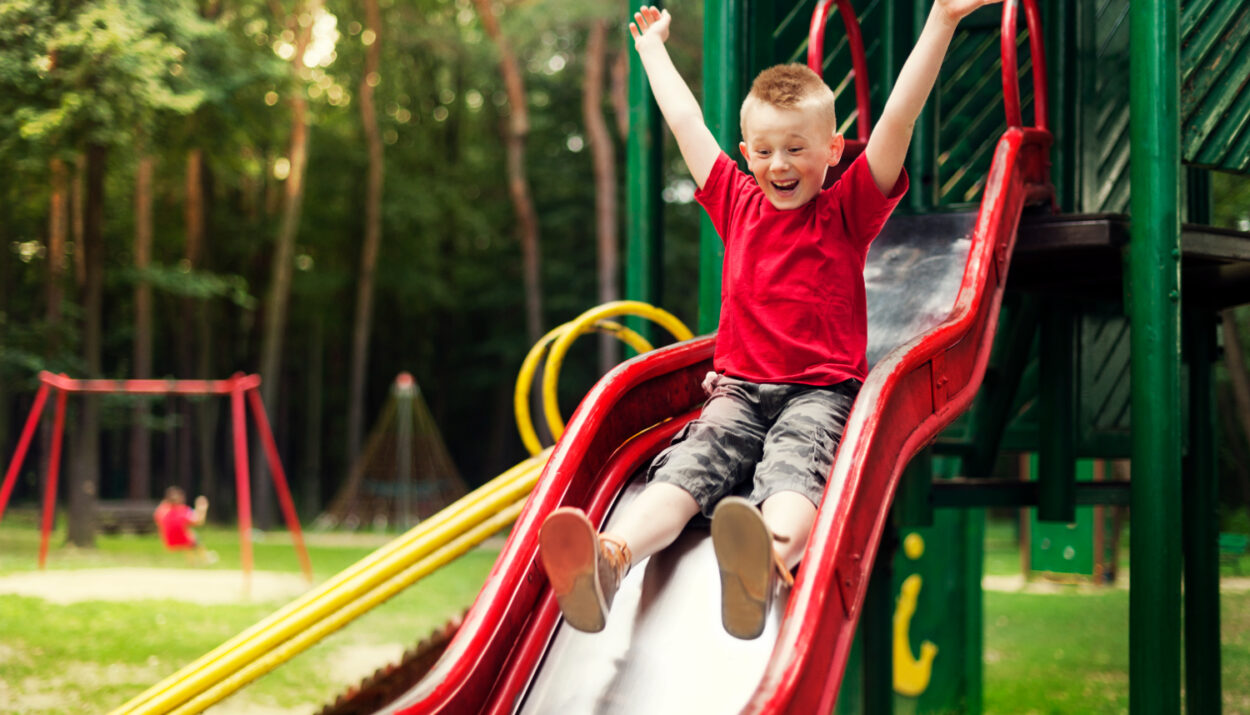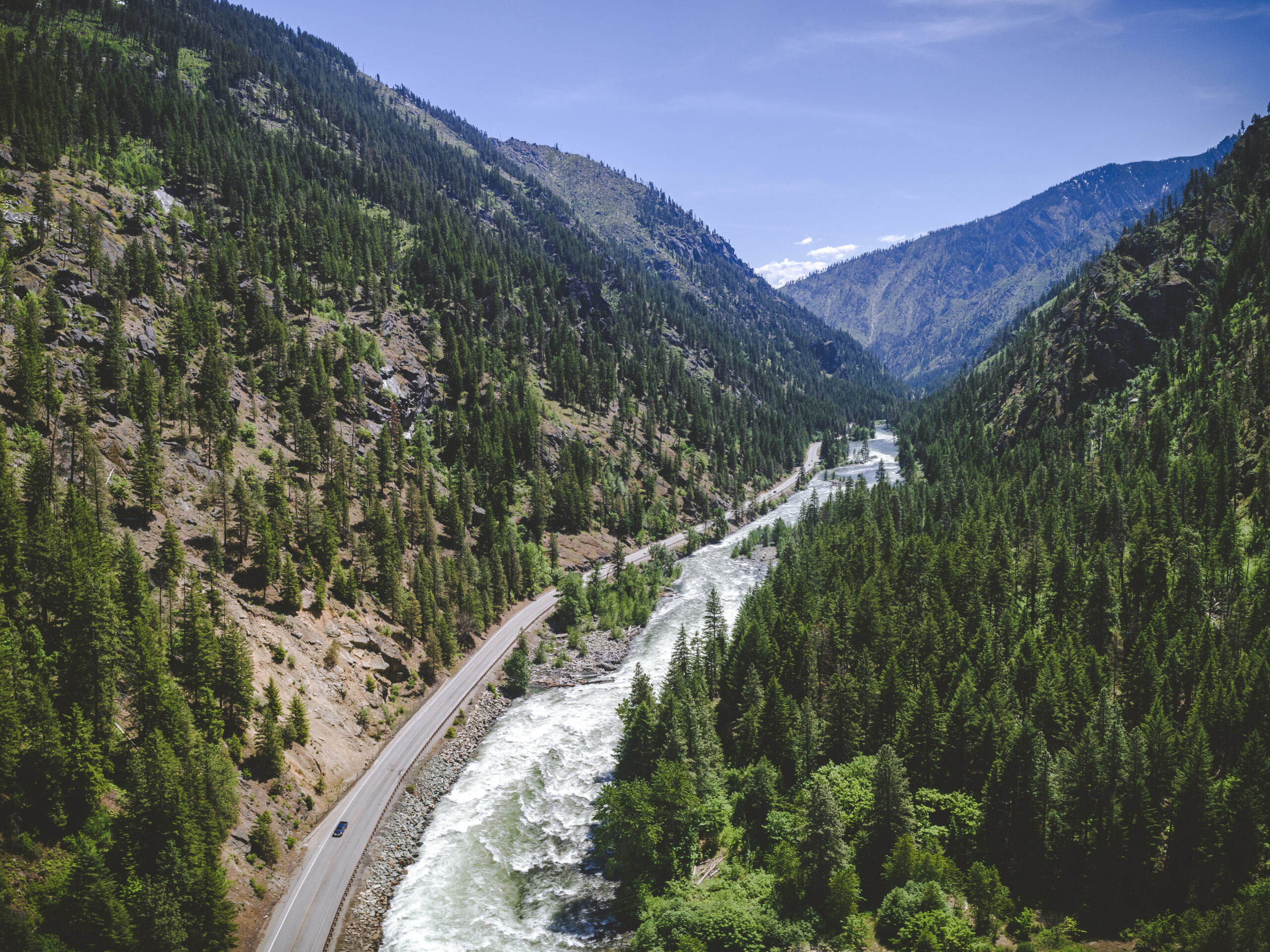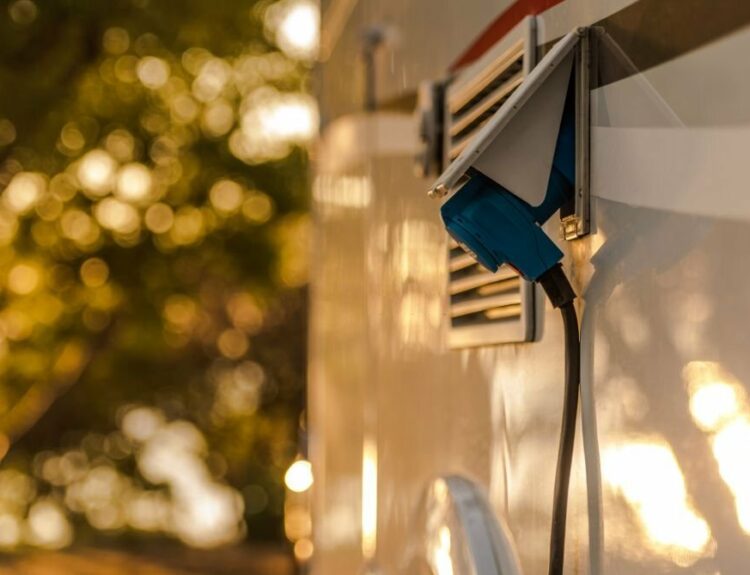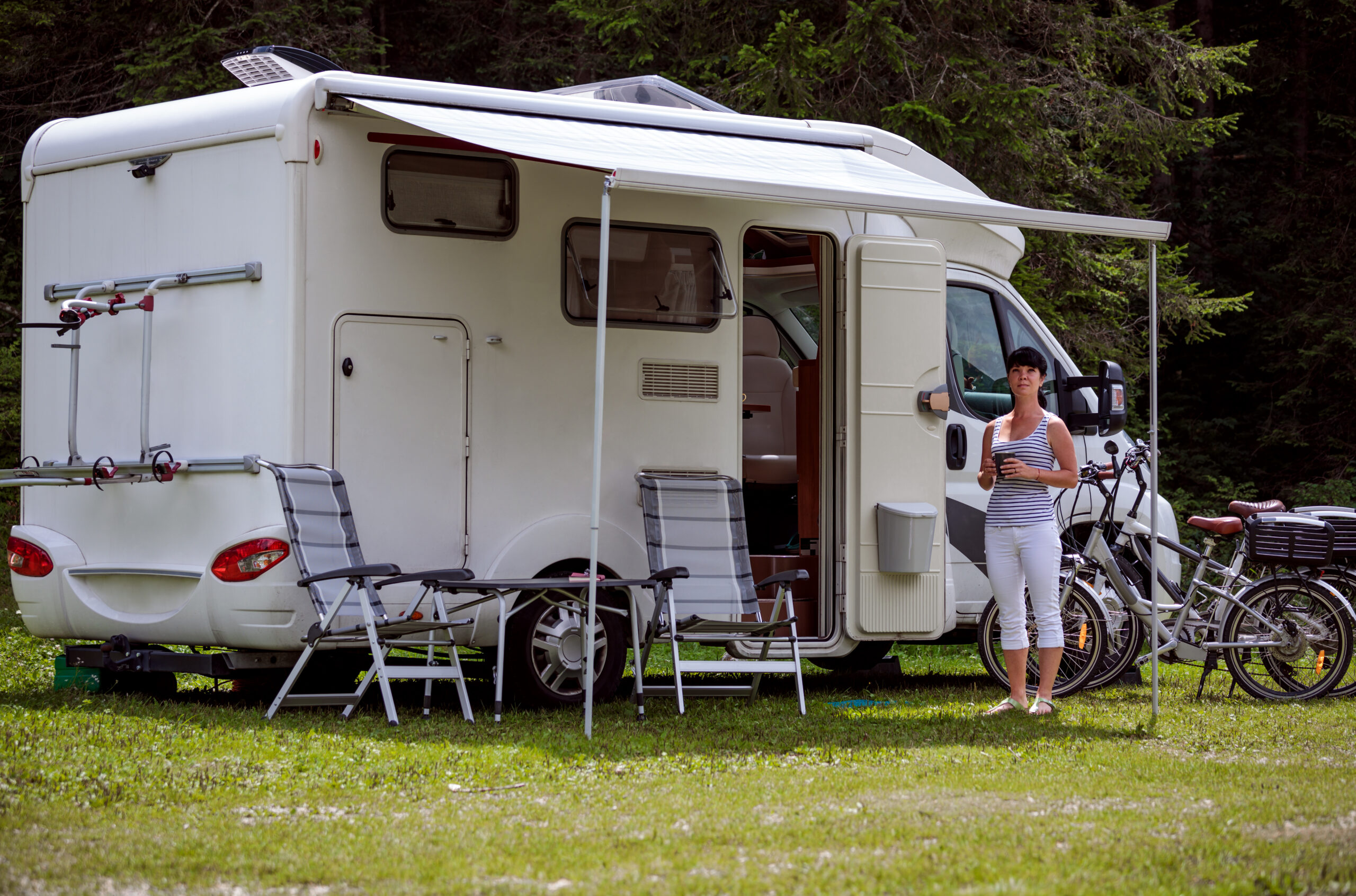RV parks are no longer just simple stopovers for road trippers. More families are choosing RV parks as their go-to vacation destinations, especially those offering child-friendly amenities. A well-planned playground is one of the most effective ways to appeal to families, enhance your park’s reputation, and increase bookings. When children have a safe and exciting place to play, parents are more likely to relax, stay longer, and return for future visits.
To build RV park playground, however, is more than just installing a few pieces of equipment. It requires thoughtful planning, understanding of safety regulations, accessibility considerations, durable materials, and an eye toward long-term maintenance. This article will walk you through each step of how to build an RV park playground that becomes a centerpiece of your park—and a magnet for families.
Key Takeaways:
- A well-designed playground attracts more families to your RV park.
- Safety regulations and ADA compliance are critical for liability protection.
- Choosing durable, weather-resistant materials extends the playground’s lifespan.
- Budgeting for installation and maintenance ensures long-term success.
- Playgrounds can increase bookings and guest satisfaction at RV parks.
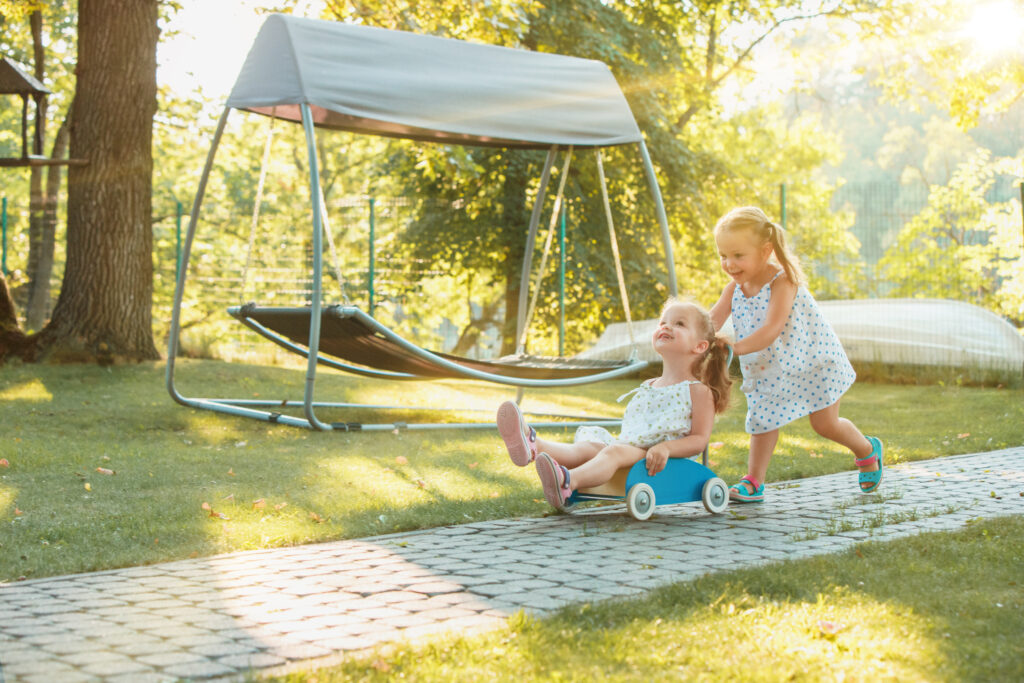
Why an RV Park Playground Is a Valuable Investment
An RV park playground offers a strong return on investment by enhancing guest satisfaction, increasing occupancy rates, and boosting repeat business. Parents traveling with children are always looking for family-friendly accommodations. If your park has a clean, safe, and engaging playground, it automatically stands out during the decision-making process.
Beyond attracting more families, a playground encourages longer stays. When kids are entertained, parents are more inclined to extend their visit. That extra night—or several—translates to higher revenue per guest. Playgrounds also encourage social interaction among families, creating a more vibrant, community-oriented atmosphere that leads to positive online reviews and word-of-mouth referrals. In the competitive world of campground management, these elements are invaluable.
A thoughtfully designed playground shows that your park cares about its guests’ experiences. This perception adds to your brand equity and can support premium pricing. It also makes your park a top recommendation among family travel communities and RV groups. Simply put, when you build an RV park playground, you’re not just adding an amenity—you’re making a strategic business decision.
Planning Your RV Park Playground
To build an RV park playground that is both enjoyable and compliant, you need to begin with a solid plan. The planning phase lays the groundwork for a successful project by helping you avoid costly mistakes, ensure safety, and create a space that meets guest expectations.
Choosing the Right Location for Maximum Accessibility
The location of your playground directly impacts how often it’s used and how safe it feels for families. The ideal site is centrally located and visible from key areas of the park. When parents can see the playground from their RV site or from communal areas like the pool, restrooms, or clubhouse, they’re more comfortable allowing their children to play independently.
It’s important to choose an area that is flat and well-drained to prevent flooding and erosion. Avoid placing the playground near heavily trafficked roads or parking areas where there could be safety hazards. If the chosen spot lacks natural shade, it’s worth investing in shade structures to provide comfort during hot summer days. The location should also allow for future expansion or the addition of nearby family-friendly features like picnic areas or splash pads.
Understanding Safety and ADA Compliance Requirements
Safety is the cornerstone of a successful playground, especially in a public setting like an RV park. In the United States, the U.S. Consumer Product Safety Commission (CPSC) provides detailed safety guidelines for public playgrounds. These cover equipment spacing, surfacing, hardware safety, and fall zones. Following these guidelines minimizes the risk of injuries and helps protect your park from liability claims.
Equally important is compliance with the Americans with Disabilities Act (ADA). This federal law requires playgrounds to be accessible to children with disabilities. ADA compliance includes ensuring wheelchair-accessible routes to and within the playground, incorporating equipment that supports inclusive play—like adaptive swings, sensory panels, and ground-level features—and using surfacing materials that accommodate mobility devices. Inclusive design isn’t just about compliance; it demonstrates that your park welcomes all families, regardless of ability.
Setting a Realistic Budget for Equipment and Installation
Cost is often the first concern when RV park owners begin planning a playground. The budget will vary depending on the size, equipment types, surfacing, and professional services used. A basic camping playground can start at $10,000 to $20,000, but for larger installations with custom themes or inclusive features, costs can easily reach $50,000 or more.
Budgeting should cover more than just the equipment. RV site preparation, installation fees, surfacing, freight, and long-term maintenance should all be considered. Many owners forget to budget for inspections and future repairs, which are essential for keeping the playground in safe, working condition. Working with an experienced vendor or installer during the planning phase can help you get a clear estimate and avoid unexpected costs down the line.

Selecting the Best Playground Equipment
The equipment you choose will define the play experience and set the tone for your RV park’s brand. RV enthusiasts families notice quality, and children quickly grow bored with generic or outdated equipment. To build an RV park playground that guests love, select age-appropriate, durable, and engaging structures.
Age-Appropriate Play Structures for Different Age Groups
Children of different ages have different developmental needs, so it’s important to create zones within your playground that cater to those differences.
For toddlers campers aged 2–5, play equipment should be low to the ground and focus on sensory and motor development. Think small slides, gentle climbers, picnic areas and interactive panels that stimulate curiosity without overwhelming younger kids.
For older children aged 5–12, the playground should offer more physically and mentally challenging activities. Taller slides, rope climbers, monkey bars, sand volleyball court and obstacle courses help these kids build strength and coordination.
Durable and Weather-Resistant Materials for Outdoor Use
Outdoor playgrounds must endure a wide range of weather conditions, from intense sun to heavy rain. Materials matter, both for safety and long-term durability. Steel and high-density polyethylene (HDPE) are excellent choices due to their strength and resistance to corrosion. These materials also maintain their color and shape longer than wood or painted metals.
Wooden playgrounds can be visually appealing but require regular maintenance to prevent rot, insect damage, and splinters. If you choose wood, be prepared for ongoing sealing and inspections. The surfacing is equally important. Engineered wood fiber, rubber mulch, and poured-in-place rubber offer excellent fall protection and weather resistance. Be sure to choose a surfacing option that is also ADA compliant.
Must-Have Features: Swings, Slides, Climbing Structures, and More
While every playground is different, some features are consistently popular and should be included when you build an RV park playground. Swings are timeless and appeal to a wide age range. Slides, especially multiple slide types and heights, provide excitement and variety. Climbing structures—such as nets, walls, or towers—offer physical challenges and encourage social play.
Interactive play panels, sensory stations, and water or sand features can elevate the playground experience. These elements not only keep kids entertained longer but also create memorable experiences that families associate with your park. Choose equipment that allows multiple children to play at once to prevent crowding and ensure a smoother flow of activity.
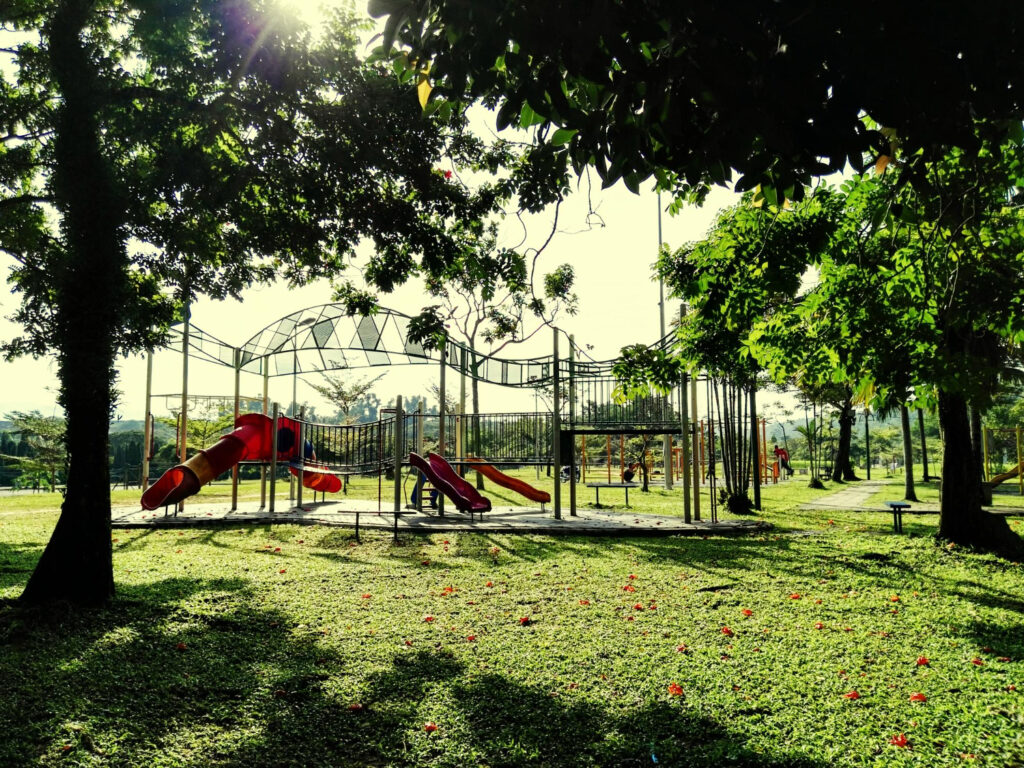
Installation and Safety Considerations
Once you’ve chosen your equipment and finalized your plans, the next step is installation. How you install your playground will affect its safety, longevity, and regulatory compliance.
Working with Professional Playground Installers vs. DIY
Professional installers bring expertise that ensures your playground meets safety and ADA guidelines from the start. They handle site preparation, secure anchoring, and proper spacing of equipment—reducing the likelihood of injury or code violations. Many manufacturers also offer installation services or work with certified partners, streamlining the process.
That said, some smaller RV park owners may consider a DIY approach to save costs. While this can work for basic playgrounds, it requires detailed knowledge of CPSC and ASTM standards, as well as a willingness to invest time and labor. If you pursue this option, consult with a certified playground safety inspector (CPSI) before opening the space to guests.
Proper Ground Surfacing for Injury Prevention
The ground beneath your playground plays a critical role in injury prevention. Falls are the most common cause of playground injuries, and the right surfacing can significantly reduce the risk. Avoid hard surfaces like concrete, asphalt, or compacted dirt. Instead, opt for materials like rubber mulch, engineered wood fiber, or poured-in-place rubber. These options provide shock absorption and are easier to maintain.
Depth and coverage are just as important as material choice. Surfacing should extend well beyond the play equipment’s perimeter to accommodate fall zones. Regular maintenance is necessary to ensure the surfacing remains level, deep, and free of debris.
Ongoing Safety Inspections and Maintenance Plans
Playground safety doesn’t end after installation. Regular inspections and maintenance are essential to keep the equipment safe and functional. Check for loose bolts, sharp edges, splinters, worn-out parts, and damaged surfacing. Seasonal weather changes can cause materials to shift or degrade, so it’s important to inspect the equipment monthly and after major storms.
Establish a maintenance schedule that includes cleaning, tightening hardware, checking for vandalism, and replacing worn parts. Consider annual inspections from a CPSI to ensure continued compliance with national safety standards. Keeping detailed maintenance records also protects your business in the event of an incident.
Enhancing the Playground Experience
A playground shouldn’t stand alone. Enhancing the surrounding area with family-friendly amenities creates a more enjoyable and relaxing experience for everyone.
Adding Shade, Seating, and Picnic Areas for Families
Campers appreciate spaces where they can comfortably supervise their children. Shaded seating areas, picnic tables, and benches invite families to linger longer at the playground. Permanent shade structures or tree coverage help regulate temperature and protect children from harmful UV rays, especially in warmer climates.
Creating a comfortable space for caregivers transforms the playground into a shared family experience. Including amenities like water fountains, trash bins, and hand sanitizing stations adds convenience and cleanliness to the area.
Incorporating Themed Designs to Fit Your RV Park’s Aesthetic
A well-themed playground adds visual appeal and enhances your park’s overall atmosphere. If your RV park is located near the beach, a nautical-themed playground with boats and waves can create a cohesive experience. Parks in wooded areas might opt for nature themes with logs, trees, and animal designs.
Consistent branding across your park makes your playground feel like an intentional part of the guest experience, rather than an afterthought. Themed playgrounds are also more memorable, increasing the likelihood of guests sharing photos and stories online.
Promoting the Playground on Your Website and Social Media
After you build an RV park playground, it’s time to let the world know. Update your website with high-quality photos, a dedicated amenities page, and testimonials from guests. Highlight the playground in your marketing materials and email newsletters.
On social media, post videos of families enjoying the existing campground, host contests, or create a launch event to generate buzz. The more visibility your playground gets online, the more likely it will influence travel decisions for families planning their next RV trip.
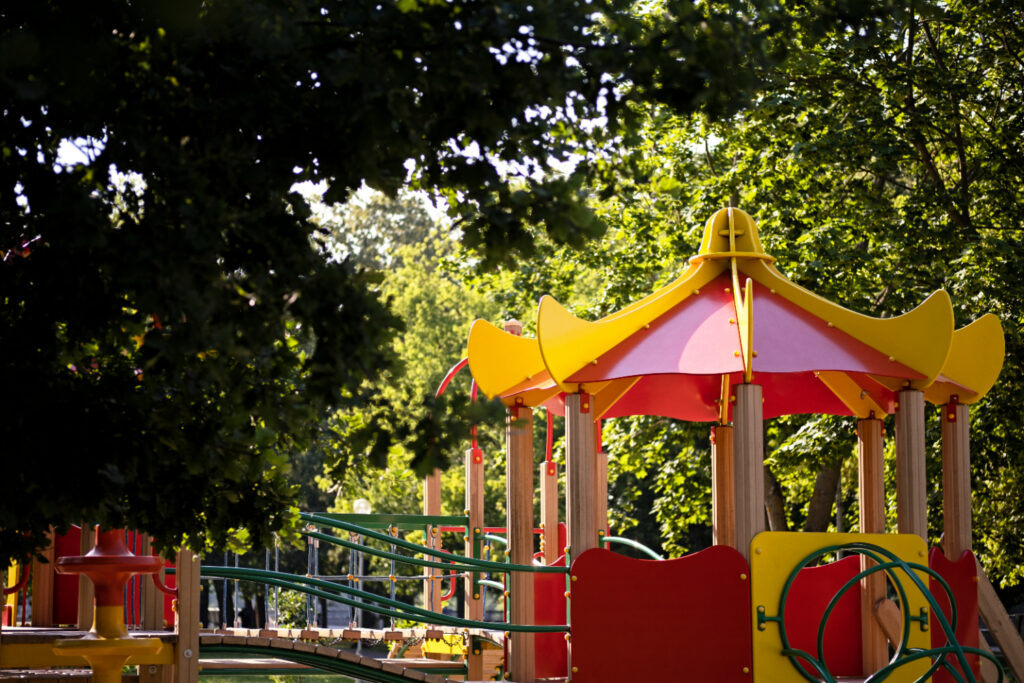
Long-Term Maintenance and Upkeep
Even the best playground will lose its appeal if it’s not maintained properly. Dirty surfaces, broken equipment, and unsafe conditions can turn a selling point into a liability. Make maintenance part of your operations plan from day one.
Routine cleaning, surfacing checks, and equipment inspections should happen weekly or monthly, depending on usage. Seasonal deep-cleaning and safety audits help address wear and tear. Keeping the space fresh and functional extends the lifespan of your investment and protects your park’s reputation for family-friendliness.
Frequently Asked Questions
What are the liability risks associated with an RV park playground, and how can I protect my business?
Liability risks include injuries caused by falls, faulty equipment, or inadequate supervision. To protect your business, ensure all playground equipment meets CPSC and ASTM standards, maintain a regular inspection and maintenance schedule, and carry liability insurance that specifically covers playground operations. Posting clear signage with age recommendations and usage rules can also help limit liability.
How can I make my RV park playground inclusive for children with disabilities?
Inclusion starts with ADA-compliant access routes and surfacing, but it should go further. Offer play elements that engage children with various abilities, such as sensory panels, adaptive swings, and ground-level features. Ensure that paths, restrooms, and seating areas near the playground are also accessible. Inclusive design benefits all families and demonstrates your park’s commitment to hospitality.
What are the insurance requirements for installing a playground in an RV park?
Insurance policies vary, but most general liability policies require you to disclose the addition of a playground. Some insurers may require specific safety inspections or certifications. It’s important to consult your insurance provider early in the planning process to understand what’s required and ensure adequate coverage. You may also need to increase your liability limits to cover potential risks.
Are there eco-friendly or sustainable playground materials that I should consider?
Yes, many manufacturers now offer sustainable options. Recycled rubber, reclaimed plastic, and sustainably harvested wood are common eco-friendly materials used in playgrounds. These materials often perform just as well as traditional ones, with added environmental benefits. Sustainable design can also be a marketing point for environmentally conscious guests.
How do I handle noise complaints or concerns from other guests who don’t have children?
Managing expectations through thoughtful design and communication is key. Place the playground at a reasonable distance from RV sites that tend to attract adults or long-term guests. Use landscaping, fencing, or sound buffers to minimize noise. Clearly indicate on your park map which areas are near the playground and offer quieter zones elsewhere for guests seeking tranquility.

